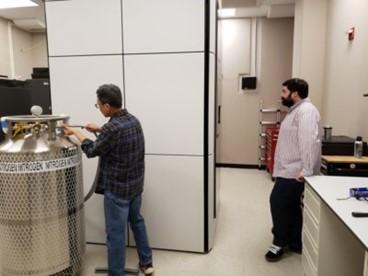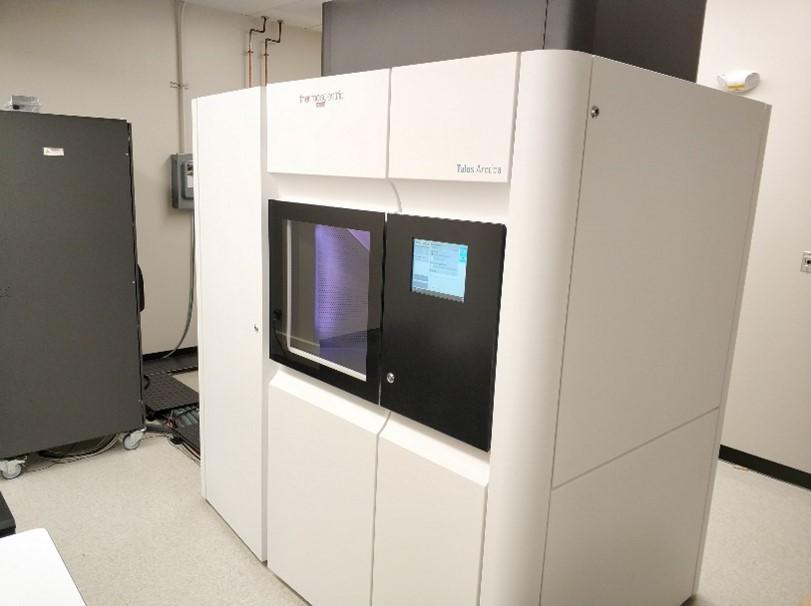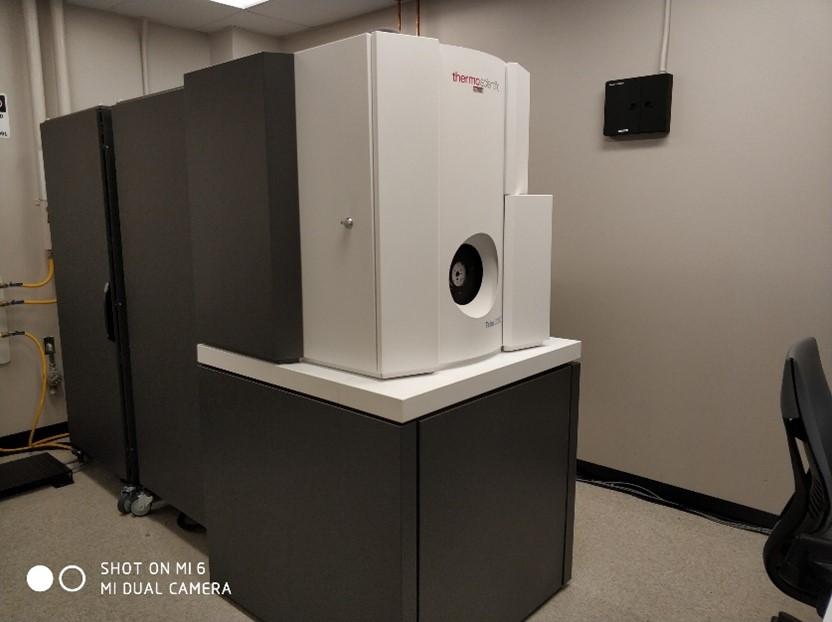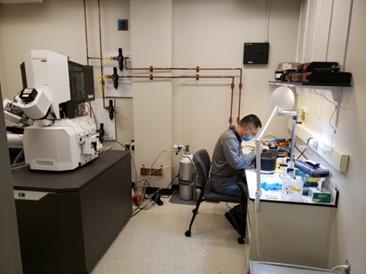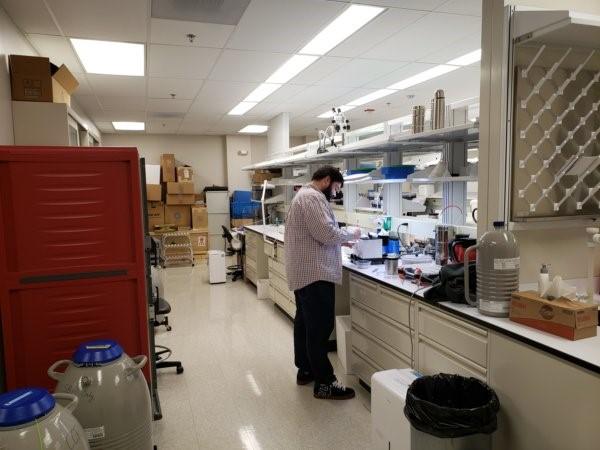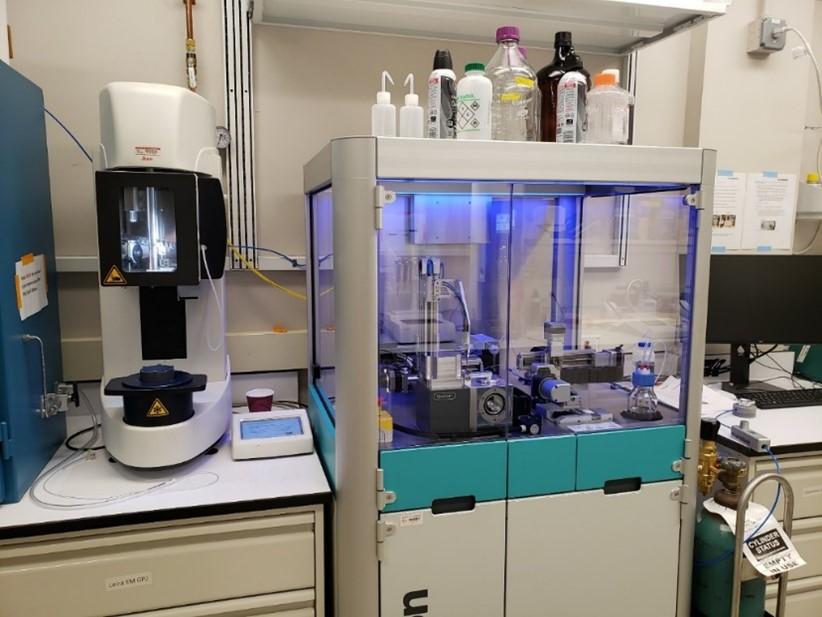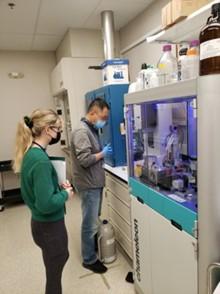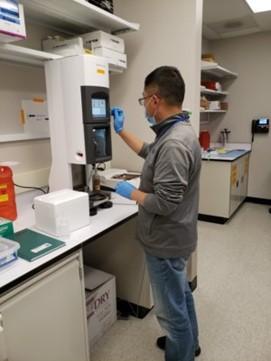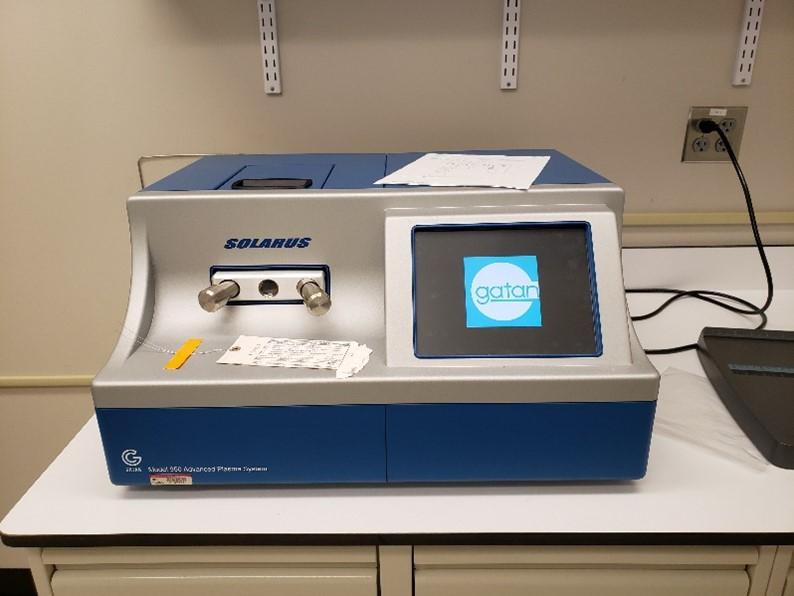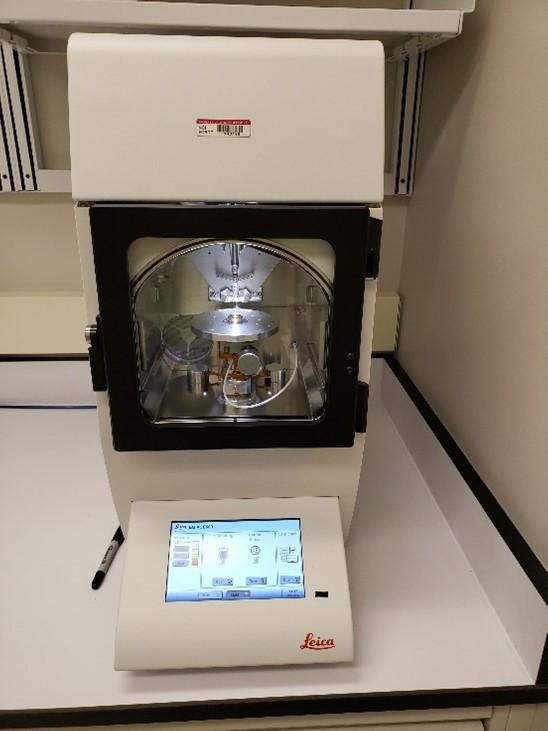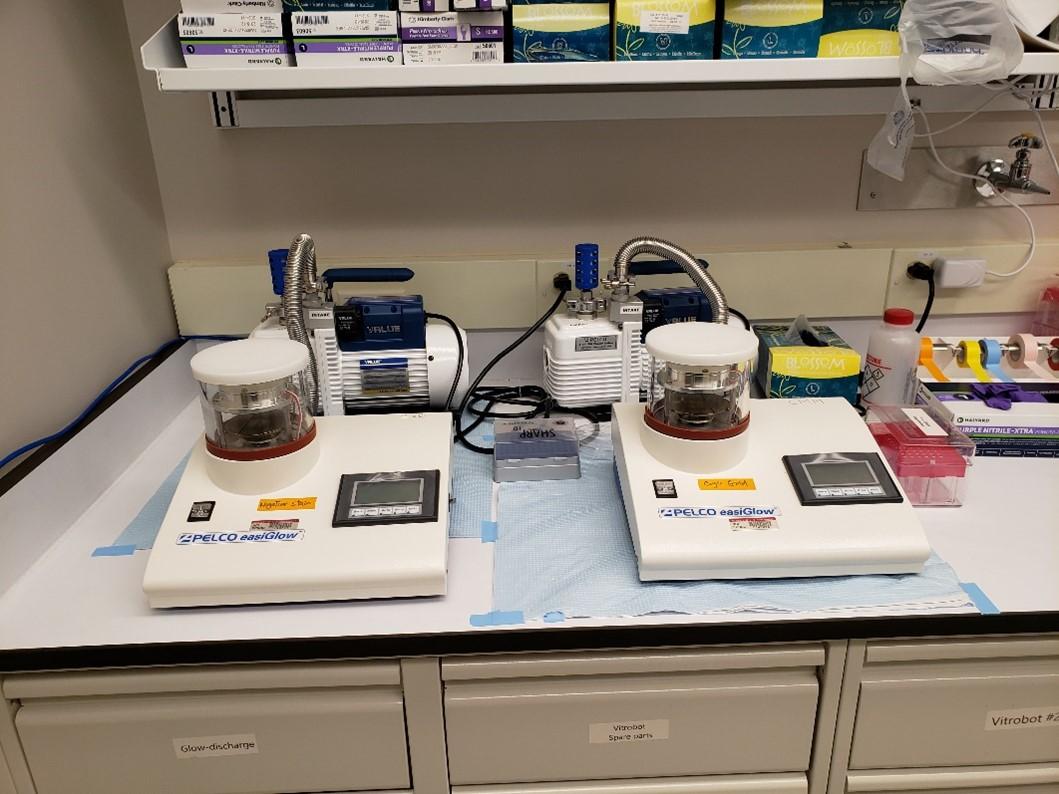Cryogenic Electron Microscopy (Cryo-EM)
The CSB Cryo-EM Facility is equipped with state-of-the-art cryogenic electron microscopes and the most advanced specimen preparation equipment. See User Policies for information on how to access the facility.
Our state-of-the-art Titan Krios G4 300kV cryo-transmission electron microscope (cryo-TEM) is at the forefront of cryo-EM technology. With its advanced capabilities, the Titan Krios revolutionizes the study of biological structures at near-atomic resolution, capturing high-quality images of biological specimens in their native frozen state. Equipped with a cold field emission gun (E-CFEG), Selectris X imaging filter and a Falcon 4i direct electron detector, our Titan Krios enables researchers to visualize intricate details of macromolecules, viruses, and cells with unprecedented resolution (< 2Å) and speed - up to 1000 movies/hour using fringe-free and aberration-free imaging. The Titan Krios microscope stands as an invaluable tool, driving breakthroughs in structural biology and providing crucial insights into important biological questions.
The Talos Arctica G2 200 kV cryo-transmission electron microscope (cryo-TEM) is designed to efficiently examine biological samples in their frozen state at extremely low temperatures. Its exceptional stability ensures minimal sample damage and preservation of delicate specimens. Equipped with an X-FEG, Gatan BioQuantum imaging filter, and K3 direct electron detector, our Arctica G2 is a versatile workhorse routinely used for rapid screening of cryo-EM specimens and high-resolution data collection.
The Talos L120C 120 kV transmission electron microscope (TEM) is uniquely designed for performance and productivity, enabling visualization of a wide range of samples including 2D and 3D imaging of cells, cell organelles, and protein complexes both at ambient and cryogenic temperatures.
The Aquilos 2 FIB-SEM (Focused Ion Beam Scanning Electron Microscope) is an advanced instrument that combines the capabilities of a focused ion beam, a scanning electron microscope, and a fluorescence light microscope (iFLM). The instrument's focused ion beam can be precisely directed to remove or deposit materials, enabling researchers to investigate and manipulate materials at the nanoscale with exceptional precision. This combination of milling and imaging enables researchers to generate thin lamella of vitrified biological specimens, including cells and organelles, for cryo-electron tomography.
Specimen Preparation Equipment
The Cryo-EM grid loading area includes four sets of clipping stations and grid loading stations.
The Leica EMGP 2 freezes fluid or extremely thin samples spread on an electron microscopy grid into liquid ethane after removing excess fluid by automatic blotting.
The SPT Labtech Chameleon streamlines cryo-EM sample preparation workflows with high-speed blot-free vitrification, automated grid handling, and the ability to screen grids based on likely ice thickness.
The Vitrobot Mark IV system highly automates the vitrification process to provide fast, easy, reproducible sample preparation—the first step in obtaining high-quality images and repeatable experimental results.
The Gatan Solarus model 950 is an advanced plasma cleaning system for the removal of hydrocarbon contamination on TEM and SEM samples. This system uses Ar, O2 and H2 plasma to clean samples prior to inserting them into the microscope.
The Leica ACE600 sputter coater is a versatile high-vacuum coating instrument, designed to produce very thin, fine-grained metal and carbon layers.
Both systems are used for thin carbon and/or Au film.
The PELCO easiGlow™ Glow Discharge Cleaning System is a standalone system for cleaning TEM grids and hydrophilization of TEM carbon support films. A glow discharge treatment with air will make a carbon film surface negatively charged (hydrophilic) which allows aqueous solutions to spread easily.
